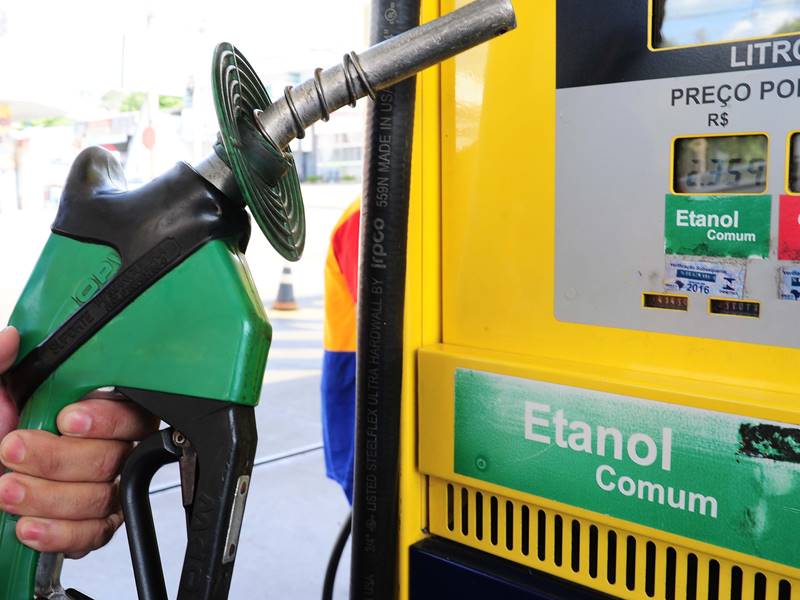Since the VAT ceiling was implemented, hydrous ethanol is no longer competitive in 151 municipalities. The data were compiled by Poder360 based on the weekly price survey conducted by the National Petroleum, Natural Gas, and Biofuels Agency (ANP).
In the week immediately before the cap was implemented, from June 19 to 25, it was worthwhile to fill up with alcohol in 46.3% of the 438 cities surveyed by ANP. Last week, from July 9 to 15, it was advantageous in only 11.9%.
To be competitive, ethanol needs to be sold for less than 70% of the price of gasoline. This percentage is adopted as a reference by the market since biofuel has less heat capacity – the amount of energy released during combustion.
The 70% reflects the difference between the energy generated when the two fuels are burned. To cover the same distance, more ethanol is used.
“We use this energy yield of 70%, but some people believe that above 70%, it is also advantageous to use ethanol instead of gasoline. Or, in other situations, people consider the positive externalities of ethanol [such as lower emissions],” said Ivelise Rasera Bragato, a researcher from Cepea (Center for Advanced Studies in Applied Economics) at USP (University of São Paulo).
Since its adoption by the states, the VAT cut has reduced gasoline prices by 17.9%. The state fuel tax rates cannot go from 17% to 18%.
The VAT ceiling was sanctioned on June 23 but only started to be adopted by the states on June 27, starting with São Paulo. According to data from the ANP, the week before its application, ethanol was advantageous in the average of four States: Mato Grosso do Sul, São Paulo, Goiás, and Minas Gerais.
Then, last week, it was only competitive in the average of Mato Grosso do Sul and São Paulo, where it is sold at the lowest price in the country: R$3.91 (US$0.71) and R$4.12 per liter, in that order. Even so, in São Paulo, it had lost competitiveness in 64 cities in the three-week interval.
“Normally, when you look at the main producing markets in Brazil, the price ratio ends up being close to 70% and below. It is true for Mato Grosso do Sul, São Paulo, Minas Gerais, Goiás (the second largest national producer), Mato Grosso, which has large-scale corn ethanol production, and normally Paraná, where it should be very close to 70%,” said Bragato.
The researcher affirms state taxation affects the price relation between ethanol and gasoline at the pump. “In São Paulo, there is a lower taxation for ethanol than in other states, like in Goiás, where it was 25% [before the VAT cap].”
Constitutional Amendment 123 establishes that the taxation of biofuels that substitute fossil fuels must maintain a “competitive differential.”
The text stipulates May 15, 2022, as a minimum reference date to be followed until Congress approves a complementary law. In addition, future legislation cannot establish rates lower than the May 15 benchmark for 20 years.
“If the two products [gasoline and ethanol] have the same ICMS, automatically the prices will be very similar. We have a 30% energy difference for ethanol [compared to gasoline]. You choose gasoline if you know that you will get 15 km with gasoline and 11 km with ethanol per liter for the same price. It ends up killing ethanol in the Brazilian market,” declared the director of the Instituto Combustível Legal, Carlo Faccio.
So far, six states have already reduced their ICMS rates on ethanol. According to Bragato from Cepea, these effects should reach the pumps in up to four weeks.
“We need to consider the fixed and variable costs – those of acquiring the products – and the stocks. Normally, we consider four weeks for the repasses to happen,” Bragato said.
With information from Poder360


